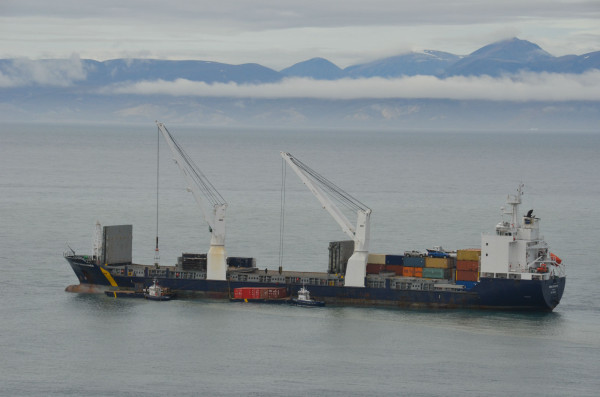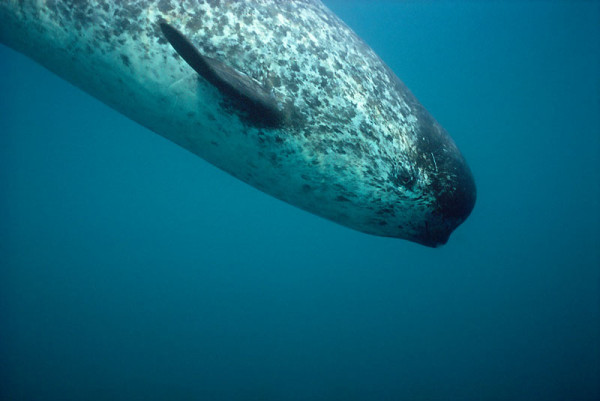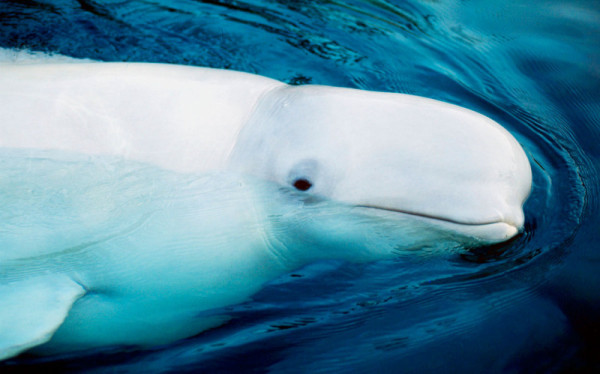For the love of whales: avoiding conflict in the Arctic
Like most humans, I don’t enjoy conflicts. If I can find a path that steers clear of conflict – which can be awkward, uncomfortable, and costly in a number of ways – then sign me up!
This simple principle – that conflict is best avoided whenever possible – is something that has been a major focus of my work recently. That may sound funny coming from a conservation biologist, but the fact is that there is plenty of conflict between nature and human activity that can be avoided. And that seems to be particularly true in the Arctic.
To many, the Arctic is a new frontier of economic opportunity, where rapid climate change is quickly increasing access for ship-based industrial projects. It’s a place where oil and gas resources are largely untapped, where minerals like iron are now set for major extraction, where shorter shipping routes can help reduce costs. But while these opportunities may bring critical new jobs and resources to local peoples, they also bring significant new risks to the people and wildlife that call the Arctic home.
A recent scientific paper in the Marine Policy journal, which I co-authored with Arctic whale experts from different countries, paints a picture of how whale habitat and development activities overlap. The paper compares the current accurate seasonal ranges for the truly Arctic whales – bowhead, beluga and narwhal – with summaries of oil and gas resources and development, as well as current and projected commercial shipping. This information is presented in the context of unprecedented rapid climatic change, and its major implications for these ice-adapted whale species.
© naturepl.com / Doug Allan / WWF-Canon
Overall we found that around 60% of the current annual range of each of these three whale species overlaps known oil and gas fields or basins. What does that mean? It means there are serious risks inherent in future developments. We’re not properly equipped to deal with spilled oil in iced waters (there still is no proven method to recover the stuff, and oil will travel and persist for many years in Arctic marine systems), and acoustic disruption from drilling, seismic activities, increased shipping, naval sonar, etc., are likely to adversely impact whale populations.
But all is not dire! Unlike many other regions, we still do have the option in Arctic marine systems of planning smartly, and to set aside a network of the most important areas for these sensitive whales to persist, without having to encounter these high risks. And we have other tools to minimize our impact on the areas these whales call home – like lighter fuel oils, improved ship design, reduced ship speed, proper navigation charts, and operational practices.
But the very first big thing to avoid these conflicts is to do just what governments and industry have already said they want to do – set aside the Ecologically and Biologically Significant Areas (EBSAs), with elevated protection measures. Many EBSAs have already been identified, and they cover the most important areas for these magnificent, mysterious whale species. We can then work together to create strong new approaches and operational standards for economic development in the Arctic – and beyond.
Unlike many other parts of our planet, we still have a chance to do things right from the start in the Arctic, to put long-term vision into action to protect the future of Arctic whales and the people who continue to depend upon them.
Despite the challenges ahead, I’m a perennial optimist: I believe that security for these whale species, their pristine natural habitats, and the livelihoods of local people, will eventually be achieved.
Increasingly it is recognized that environmental and human security in many parts of the world –perhaps more so in the Arctic than anywhere else – are inextricably linked. Our job right now is to recognize and respond to the now widespread understanding among industry, community and government leaders that development ‘at any cost’ is not the smart way to proceed. We need to kick the habitat of rushing toward maximum growth and new riches, and plan for what the rest of our fellow planetary citizens – including these whales – need in order to thrive for generations to come.




